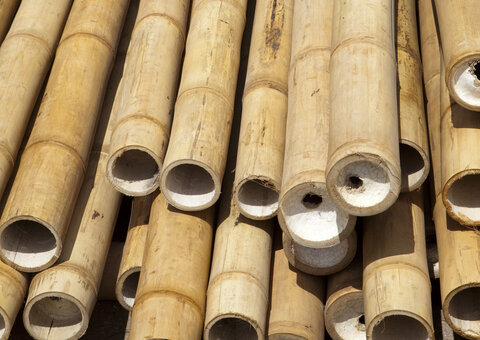What materials should I use to support the target?

You can use sticks or steel.
Sticks
Bamboo is ideal, being light, strong and straight. Poles from a variety of other trees, such as Diospyros quiloensis,are also suitable. If termites attack the posts they can be prevented by dipping the base of the post in the insecticide used to treat targets. However, it is unlikely that the posts will survive rot for more than a year or two.
Sticks are ideal for tiny targets as they are cost-effective and can be locally sourced and due to the nature of targets being replaced every 6 or 12 months, they do not need to last longer than this.
Steel
The extra expense of steel supports is justified if you propose to operate for several years -- steel posts will last for ten years or so if they are knocked-in and pulled out carefully, and will last about twice this long if galvanised or if painted regularly. Bitumastic paint, either black or aluminium coloured, is satisfactory and usually relatively cheap.
In Zimbabwe the most cost-effective posts are made of mild-steel tube, 18mm in external diameter, with wall thickness of 1mm. Steel posts are best knocked in with a tube hammer.
Sticks and steel
The problem with wooden posts is that they can be difficult to knock into hard ground. In such cases it is helpful to have a short length of steel tube that is knocked into the ground first, and into which the wooden post can be fitted.
It is sometimes difficult to extract the steel tube from the ground. In anticipation of this problem it can be helpful if, prior to knocking in, a hole of 6-8mm in diameter is drilled through the side of the tube, about 2cm from its top end. A hooked steel rod can then be inserted into the hole to give a purchase at extraction time.
Aluminium
Avoid aluminium supports – they are too expensive!
Length of posts
The posts must be long enough to allow an adequate length to go into the ground for firm anchorage. This length depends on soil type and wind conditions. Under many circumstances 40cm of anchorage length will be satisfactory, but in sandy soil at least 50cm might be required, and in very firm soil 30-35cm might do.
The best policy for determining the anchorage requirement in your particular area is to run preliminary field trials with posts of assorted length.
If the post is for targets, bear in mind that the target cloth should be supported so that its base is about 15cm off the ground, where it will be relatively free of termite attack, mud splashes and regenerating grass and herbs.
For tiny targets 4 sticks, 2 that support the target in the ground and two that are horizontal supports to maintain the targets shape. The horizontal supports should be 50cm in length, the width of the target. The vertical supports should be long enough so that the target can secured in the ground and the bottom of the target should not be greater than 50cm above ground level.